How to choose a radiator: according to the principle of
Information on how to choose a heating radiator will be relevant not only to craftsmen who plan to build a house. Even when purchasing an additional heater, one should take into account its parameters, since any change in the building's heat supply system must be thought out and justified.
In our article we will tell you what you need to remember when designing heating circuits, as well as what rules should be followed when choosing batteries for a house or apartment.
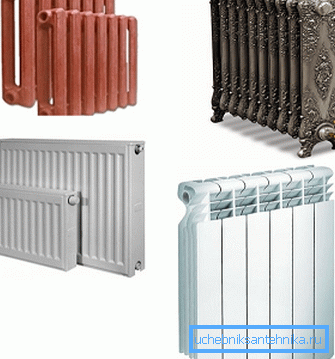
Main selection criteria
Principle of operation
Understand how to choose the right radiator, it is possible only after a comprehensive analysis of its operational parameters. There are relatively few of them, but they are all very important.
The first thing we need to know is the type of devices used.
According to this parameter, radiators are divided into water and electric:
- In water batteries, heated water acts as a coolant. The heating process is carried out in a boiler or in a special furnace equipped with a water heating tank. After that, the coolant through the pipes (by gravity or force) enters the radiator housing, where it transfers heat to its walls.
Note! Sometimes, instead of water, hot steam, antifreeze or a water-alcohol mixture is used as a coolant. The use of these compounds leaves an imprint on the design of the system as a whole.
- The principle of operation of the electric radiator is radically different from that described above. Inside the device there is a heat carrier based on mineral oil, which is heated by the operation of the built-in internal heating elements. After that, the heated contents transfer a significant portion of the heat to the walls of the battery, from where energy enters the environment.
- The important point is the power consumption of such devices. Before choosing an oil radiator as the main source of heat, it is advisable to check the condition of the wiring and its safety margin: very often the cables simply do not withstand the load, which leads to a short circuit and sometimes to a fire.

If you are conducting a reconstruction of the heating network, then the question of how to choose radiators does not even rise: we simply buy devices of the same type as were installed.
But with a complete rework, it is quite possible to abandon water heating in favor of electric. However, all factors are important here, and first of all - the price of electricity in your area and the stock of generating capacity. If you do not share these nuances, it may turn out that saving on heating will be either insignificant or absent altogether, but interruptions in heat will become commonplace.
Heat transfer
The next moment is heat transfer. Here we need to decide how to choose heating radiators over the floor space, because - the larger the room, the more heat is needed to heat it.
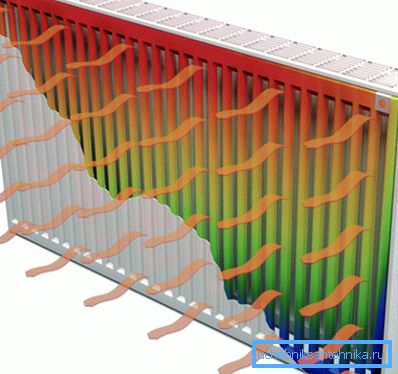
- The first method is the simplest: multiply the area of a room by 100 W, and divide the resulting number by the heat transfer rate of the entire radiator or a separate section (this information contains instructions for the device). The resulting result is rounded up to a whole value in a big way in order to obtain a performance margin.
- There is one more answer to the question how to choose the number of sections for radiators. To do this, the volume of the room (the area multiplied by the height) is multiplied by 41 W (the standard coefficient of heat consumption for the middle band of the Russian Federation). Then we proceed as in the previous case: we divide the need of the room for heat by the design heat transfer of one section.
Note! The heat transfer parameters are specified for a specific coolant temperature (basic values of 60, 70 and 80 0 С, but there are other options), so that the calculations should take the value that best matches the characteristics of your heating network.
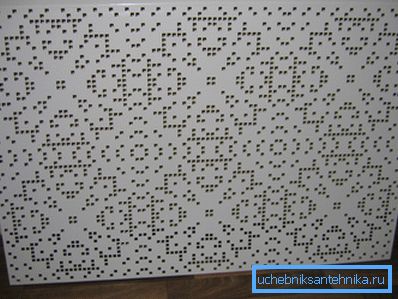
In addition, to compensate for heat loss, it is desirable to use correction factors.
For example:
- For a room with one window and one outer wall + 20%.
- For a room with two windows and two external walls + 30%.
- In the presence of windows facing north or northeast + 10%.
- When using solid-type screens with horizontal slots + 15-20%, etc.
The values that suit your situation are summed up and added to the heat consumption value. If this is not done, it may turn out that the radiator power is simply not enough.
Operating pressure
If you are planning to do the installation yourself, without the involvement of specialists, then it is very important to deal with the working pressure in the system. The fact is that excessive hydraulic loads can lead to the destruction of heating devices, because you need to select the radiators that accurately withstand the pressure drops in the system.
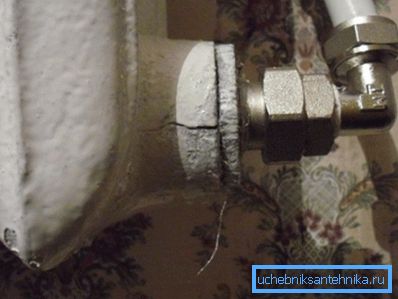
The magnitude of the pressure withstand depends largely on the material from which the device is made:
| Type of radiators | Working pressure, atmospheres |
| Cast iron | 10 - 15 |
| Aluminum | 6 - 16 |
| Steel | 6 - 10 |
| Bimetallic | Up to 35 |
As you can see, all the constructions can be used in all-house networks, however, when installed in an apartment building, short-term pressure surges should be taken into account when pressure testing. That is why it is important to have a safety margin, otherwise leakage may occur over time.
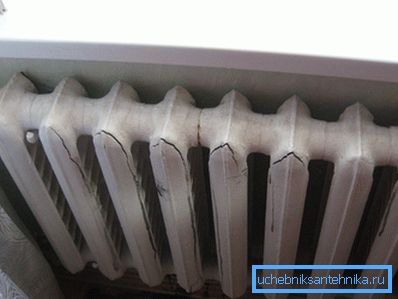
Varieties of material
Cast iron
Today, in retail chains there are various types of radiators: what to choose, you decide, but you need to remember that in many ways the properties of products depend on the material from which they are made.
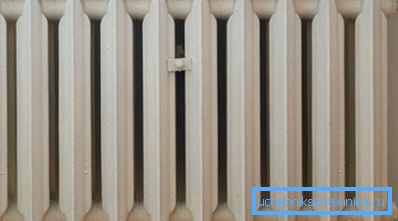
Cast iron radiators are a group of somewhat outdated devices. If previously they were equipped with almost all the premises, today such products are gradually being decommissioned.
There are several reasons for this:
- First, despite the high density and resistance to pressure drops, cast iron has a certain brittleness. This quite often leads to the fact that when struck with a hard object, the battery simply breaks up.
- Secondly, the heat emission in cast iron radiators is quite low, and they heat up very slowly.
- Thirdly, a significant mass makes it difficult to install the heating system with their own hands, and in some cases (for example, if the walls of the house are made of porous concrete) make the installation of batteries impossible.
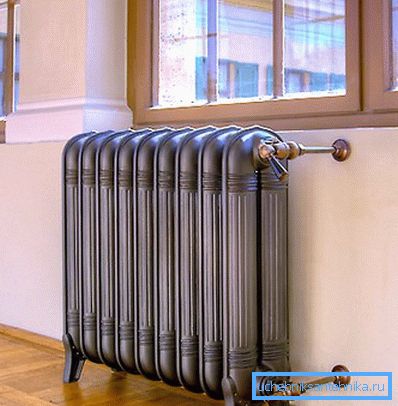
However, there are exceptions. Designer cast iron radiators are in certain demand because they are intended primarily for interior decoration. In this case, of course, we are not talking about cost optimization, since the products themselves are expensive (from 10 thousand rubles), and it will have to spend much more on heating.
Steel
Steel panel and tubular models can also be used to heat homes.
Steel features such features:
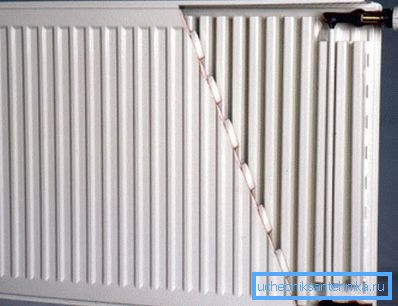
- Good thermal conductivity - in this parameter heating panels are many times superior to products made of cast iron.
- Sufficient strength.
- Relatively low cost.
At the same time, there are steel products and cons:
- When in contact with water, steel is subjected to corrosion, because such radiators will have to be replaced much more often.
Note! Corrosion is greatly accelerated when using unprepared water, as well as when a large amount of air enters the system. That is why in the networks of apartment buildings with centralized heating, batteries rust very quickly.
- With pressure drops there is a risk that the pipe joints will fail.
Aluminum
Before you choose an aluminum radiator for installation in a house or apartment, you should be familiar with its features:
- For products of this type is characterized by very high heat dissipation. It is aluminum models that are market leaders in this parameter, so if your priorities are to provide a comfortable microclimate with minimal fuel consumption, then you need to choose aluminum.
- The strength of the structures is quite sufficient, but strong pressure drops can destroy the seams between the sections.

- Aluminum, unlike steel, does not rust, but if alkaline water enters the system, the inner surface of the sections will corrode. Over time, this will lead to a decrease in heat transfer and a decrease in the strength of the walls.
Copper
Before choosing a good heating radiator, it is important to analyze all the available options. We deliberately focus your attention on this advice, because very often, due to their low prevalence, decent designs are beyond the attention of masters.
These products include copper batteries:
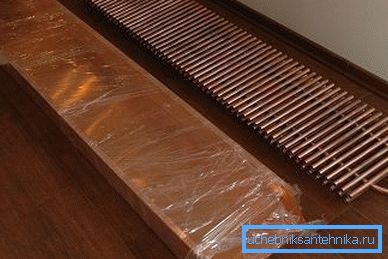
- Copper is practically not subject to corrosion, which significantly prolongs the service life of batteries.
Note! With active oxidation, a dense patina forms on the surface, which protects the metal from further destruction.
- The elasticity of the walls of copper pipes allows them to tolerate pressure drops.
- The thermal conductivity of the material is very high, because almost all the energy that the copper radiator receives, it will give to the air of our room.
Only two minuses:
- Copper is quite expensive, because the costs of the arrangement of the system will be substantial.
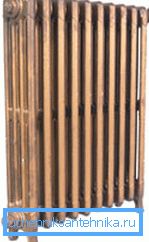
- When copper comes into contact with steel, corrosion is actively developing, so saving by laying cheaper pipes will not work.
Bimetallic models
And yet, if you need a device with a universal combination of characteristics, then choose a bimetallic battery:
- The basis of the product consists of pipes and tanks made of steel (sometimes - from copper).
- Heat exchanging aluminum plates are installed on the surface of hot water pipes.
- Due to the separate design, aluminum does not contact with liquid and does not corrode, and also does not experience hydraulic loads.
- At the same time, the fins provide effective heat transfer.
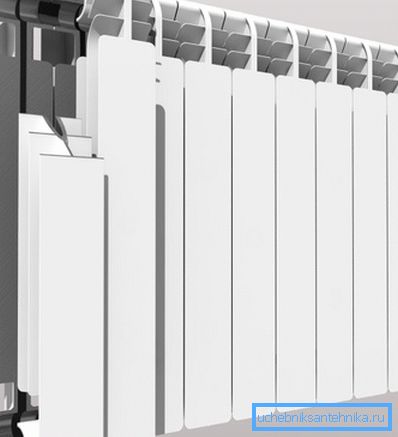
A significant disadvantage of bimetallic type radiators is their high price, but this is exactly the case when the one-time purchase costs are compensated for by the use benefit.
Conclusion
As you can see, you can find a variety of heating radiators on the market: we have described above how to select them according to the basic parameters, and for a more detailed analysis it is worthwhile to also watch the video in this article. It should not be forgotten that there is no universal solution, and the final choice still depends on your priorities and on the restrictions imposed by the existing conditions.